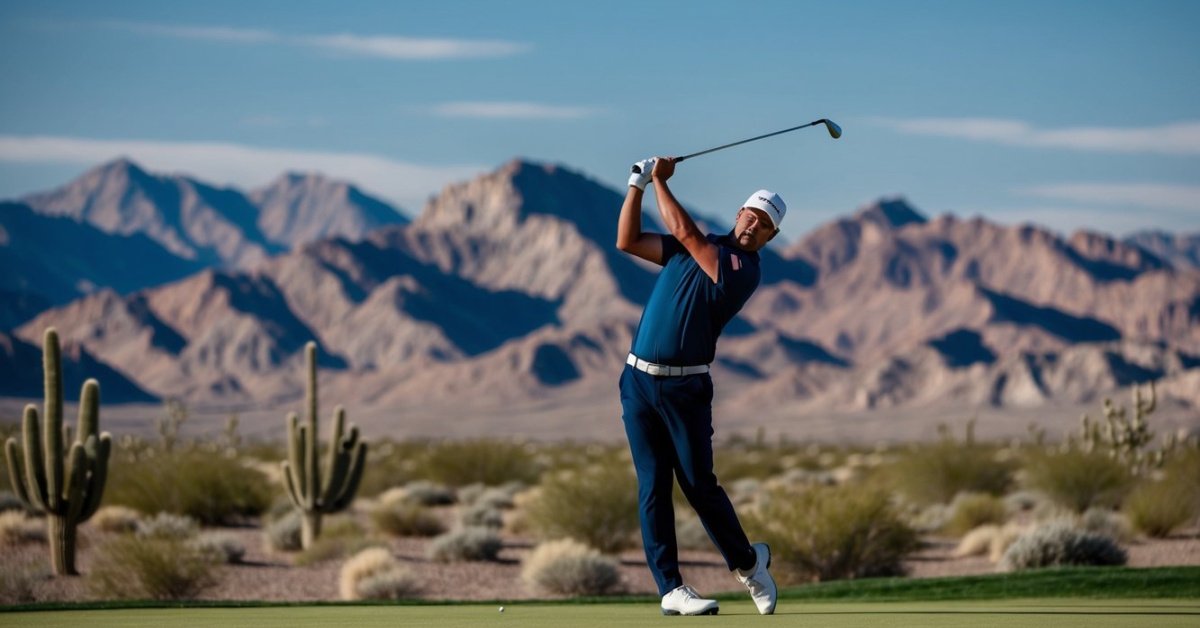Ever wondered if the golf ball you’re using is holding you back? As a senior golfer, choosing the right ball can be a game-changer, literally. It’s not just about the brand or the price; it’s about what works for your unique style and strength.
Factors to consider when choosing a golf ball for seniors
When you’re out on the course, the right golf ball can be your best ally, especially as a senior player. As your swing speed may not be what it once was, selecting a golf ball that complements your current abilities is crucial. Remember, it’s not just about what the pros use or what’s touted as the market’s latest and greatest; it’s about what works for you.
One of the key factors to consider is compression. Golf balls with lower compression are softer, making them more suitable for golfers with slower swing speeds. These balls can provide better distance and a softer feel, which can be particularly beneficial for your game. Consider trying out a few different compression ratings to find the sweet spot that matches your swing.
Another aspect to take note of is the golf ball’s construction. Typically, balls come in the following varieties:
- Two-piece: Generally offering more distance and durability.
- Multi-layer: Designed to give players better control and spin.
As a senior golfer, you might find that a two-piece ball helps you get those extra yards, though if you’re looking for more control around the greens, a multi-layer ball might be the more strategic choice.
Don’t forget about the cover material. Surlyn and urethane covers are common, with the former being more durable and the latter providing more spin. If you’re gentle on equipment and value precision, urethane could enhance your game. However, for those who go through balls quickly, the resilience of Surlyn might be more practical.
It’s also worth checking out different dimple patterns, which affect the aerodynamics of the ball. Dimples can influence trajectory and stability in the wind, which, on a blustery day, can mean the difference between the rough and the fairway.
Lastly, take a look at the visibility and color of the ball. If you find that you’re often searching for your ball in the rough, a high-visibility color like yellow or orange can save you time and frustration.
By considering these factors, you’ll be better equipped to find the ideal golf ball that aligns with your senior golfer status—helping you maintain, or even improve, your level of play without having to rely solely on brute strength.
The importance of compression
« Do Golf Balls Make Any Difference? Secrets to Elevate Your Game Revealed
Which Golf Ball is Best for High Handicapper? Unlock Your Best Game Yet »
When you’re looking into the ideal golf ball as a senior player, compression should be on your radar. It’s a term that might sound technical but understanding it can noticeably impact your game. A golf ball’s compression is basically a measurement of how much it squashes against the club at impact. High compression balls require more swing speed to compress and travel the distance, something that might not be in your wheelhouse anymore.
For you as a senior golfer, a lower compression ball is oftentimes your best bet. It’ll compress more easily with your swing, meaning you can still see that satisfying distance on your shots without having to swing out of your shoes. Here’s the kicker: low compression doesn’t mean you’re sacrificing control. In fact, you might find these balls provide more control around the greens, a beneficial trade-off for any golfer who prioritizes precision.
Matching Compression to Swing Speeds
Your swing speed is the crux of your game, and matching it with the right compression makes a world of difference.
| Swing Speed (mph) | Recommended Compression |
|---|---|
| Below 85 | Low (below 60) |
| 85 to 104 | Medium (60-90) |
| Above 105 | High (over 90) |
Adapting to a lower compression ball can breathe new life into your game, particularly if you’ve noticed a drop-off in distance. You’ll feel the ball jump off your clubface, a reminder that your game can still be exhilarating and, more importantly, effective.
Feeling the Difference
Try a few different compression levels during your next practice session. Notice how the lower compression ball behaves with your irons and drivers. Focus on how it affects your feel for the game as well—the tactile feedback from club to ball is crucial in making those fine-tuned adjustments during play. Remember, with golf, it’s the little things that often lead to the most significant improvements.
A proper ball with a compression that aligns with your swing doesn’t guarantee an overhaul of your performance, but it’s certainly a piece of the puzzle that shouldn’t be overlooked. As you hit the links, pay attention. Different balls can offer subtle but key changes in your distance and control, hinting at the potential for shaving off a few strokes.
How to determine the right compression for your swing speed
When you’re out on the fairway, ready to make your mark, nothing feels quite as sweet as the perfect drive. But to find that buttery-smooth swing, the ball you choose plays a pivotal role—particularly its compression.
Matching the ball’s compression to your swing speed isn’t rocket science; it’s about finding that sweet spot where your physical capabilities and the ball’s potential meet. Think of it as tuning an instrument to get the best harmony. To begin, you’ll need to know your average swing speed. While professional fitting sessions can offer precise measurements, simple apps or a launch monitor at your local golf retailer can provide a ballpark figure—good enough to take a shot at improving your game.
Here’s a quick reference you can use:
| Swing Speed (mph) | Recommended Compression |
|---|---|
| Below 85 | Low (Below 55) |
| 85-95 | Medium (55-70) |
| 95 and Above | High (Above 70) |
Bear in mind, these numbers aren’t set in stone. You should feel free to experiment with different compressions around your swing speed range. It’s like choosing the right golf club; only this time, you’re honing in on a ball that feels right and performs optimally with your swing type.
Keep an eye on the flight of the ball. If it’s soaring too high, you might be using a ball with too low of a compression for your swing. Conversely, if you’re not getting enough loft, the compression might be too high. Pay attention to how the ball feels off the clubface. The feedback from your shots provides critical clues, guiding you toward the best match.
It’s not all about power, either. Softer compression balls can offer a better feel and control around the greens, which can be particularly advantageous to your short game. You’ll want to avoid the trap of equating low compression with a lack of quality. Today’s market offers a range of low compression balls that deliver excellent performance across the board.
Best golf balls for high swing speeds
When you’ve got power in your swing, choosing the right golf ball becomes even more critical. With a high swing speed, you’re not just looking for distance; you’re also after a ball that offers good control, especially on approach shots and around the greens.
Tour-level balls are generally the best fit for golfers with high swing speeds. These balls usually have a multi-layer construction, providing a blend of distance, feel, and spin control that suits your aggressive game. The outer urethane covers of these balls are durable yet soft enough to enhance your touch.
Since you’re burdened with plenty of swing speed, you’ll need a ball that can withstand that force and still give you the desired performance. Balls with a higher compression rating fit the bill as they are designed to be hit hard. When you compress these balls correctly, they reward you with both exceptional distance off the tee and a piercing ball flight that can cut through wind.
Let’s not forget the greenside control. After all, being able to stop the ball quickly on the green is just as important as hitting it far. A ball with a soft feel upon impact will improve your ability to play those finesse shots when close to the pin. Here’s a quick rundown of some characteristics to look for in golf balls meant for high swing speeds:
- Construction: Multi-layer with a soft urethane cover.
- Compression: High, generally over 100.
- Spin: Low off the driver for distance, high around the greens for control.
Golf balls designed for high swing speeds are often labeled as ‘Tour’ or ‘Professional’ on the packaging, cueing you in that they’re engineered for the experienced player. It’s worth trying out a few different brands and models to see which one feels the best for your game and compliments your swing the most. Some of the popular choices among seasoned golfers include the Titleist Pro V1, the Bridgestone Tour B X, and the TaylorMade TP5X, all of which offer a distinct performance that might just suit your game to a tee.
Best golf balls for low swing speeds
When your swing doesn’t quite have the zing it used to, the right golf ball can make a world of difference. With low swing speeds, typically associated with senior players or those with more elegant, controlled swings, you’ll want to aim for maximum distance and feel around the greens.
Golf balls designed for low swing speeds often come with lower compression rates. This means they’re softer, making it easier for you to compress the ball at impact even with a gentler swing. The upshot? You won’t have to swing out of your shoes to achieve respectable distances.
Two-piece golf balls tend to be a go-to for players with a slower swing. They generally consist of a large, solid rubber core and a durable cover. The design is tailored to reduce spin and increase velocity off the tee, which can help send your ball further down the fairway.
But don’t get it twisted—you’re not sacrificing greenside control for distance here. Many lower-compression balls today come with innovative cover technologies that enhance spin around the greens, giving you that soft, responsive feel you need for precision shots.
Here’s a snapshot of golf balls that typically mesh well with low swing speeds:
- Titleist DT TruSoft: Boasts a low compression core for increased distance and a soft feel.
- Callaway Supersoft: Known for its ultra-low compression core and soft trilonomer cover.
- Wilson Staff Duo Soft+: Touts the title of the world’s softest and longest premium 2-piece ball.
- Srixon Soft Feel: Combines a low compression core with a soft cover for a blend of distance and control.
Remember, it’s not just about picking a ball out of the bin and hoping for the best. Give each of these balls a swing on the course to see which one syncs up with your game the best. Ball fitting isn’t just for the young guns—it’s for anyone focused on optimizing their performance, and that means you too. Keep an eye on how each ball performs from tee to green, and pay particular attention to the feel on those touch shots around the green. Your perfect match is out there, and it’s bound to make those beautiful days on the course even more rewarding.
Different types of golf balls and their benefits for seniors
As you delve deeper into the game, you’ll soon realize there’s a world of golf balls out there, each designed to cater to specific needs. Knowing which golf ball to choose can significantly impact your performance, especially as a senior golfer. Here’s a rundown of different types of golf balls and how they can benefit your game.
Two-Piece Balls: These are the go-to option for seniors. With a large, solid core and a durable cover, two-piece balls are built for distance and durability. They typically have lower compression, which means they’re softer and easier to hit for those with a slower swing speed. You’ll likely notice that shots feel more comfortable and the ball flies farther with less effort.
- Titleist DT TruSoft: Designed for a soft feel and increased distance.
- Callaway Supersoft: Great for reducing spin and enhancing control.
Multi-Layer Balls: For seniors who’ve still got some zip in their swing, multi-layer balls might be appealing. With additional layers, these balls offer a blend of distance and spin control. They can provide more precise shot shaping and better control around the greens, which might suit your playstyle if you’re looking to maintain an edge over the competition.
- Srixon Z-Star: Ideal for those seeking maximum performance with a moderate swing speed.
Low Compression Balls: If you’re struggling to get the distance you once did, low compression balls could be your savior. These balls compress easily on impact, which transforms into greater distance, even at lower swing speeds. They also tend to generate less spin, simplifying the game for those needing a straighter flight path.
- Wilson Staff Duo Soft+: Known for its exceptionally low 35 compression, offering remarkable feel and distance.
- Srixon Soft Feel: Lives up to its name, providing a comfortable hit and consistent ball flight.
Conclusion
Frequently Asked Questions
What are the best types of golf balls for seniors?
Two-piece golf balls are generally the best for seniors due to their lower compression, making them easier to hit for those with slower swing speeds. They provide a good balance between distance and control.
Why are two-piece balls recommended for seniors?
Two-piece balls are recommended for seniors because they typically have lower compression, which suits slower swing speeds and provides easier playability and distance for senior golfers.
What are multi-layer golf balls?
Multi-layer golf balls offer a combination of distance and spin control, having more than one layer that caters to different aspects of the game, such as feel, spin, and durability, making them suitable for players looking for a balance in performance features.
Why choose low compression golf balls?
Low compression golf balls are ideal for seniors as they compress more easily on impact, resulting in less spin and increased distance, particularly beneficial for golfers with slower swing speeds.
Can you give examples of golf balls suitable for seniors?
Yes, examples of suitable golf balls for seniors include the Titleist DT TruSoft, Callaway Supersoft, Wilson Staff Duo Soft+, and Srixon Soft Feel. These balls are designed to optimize performance for senior players.











